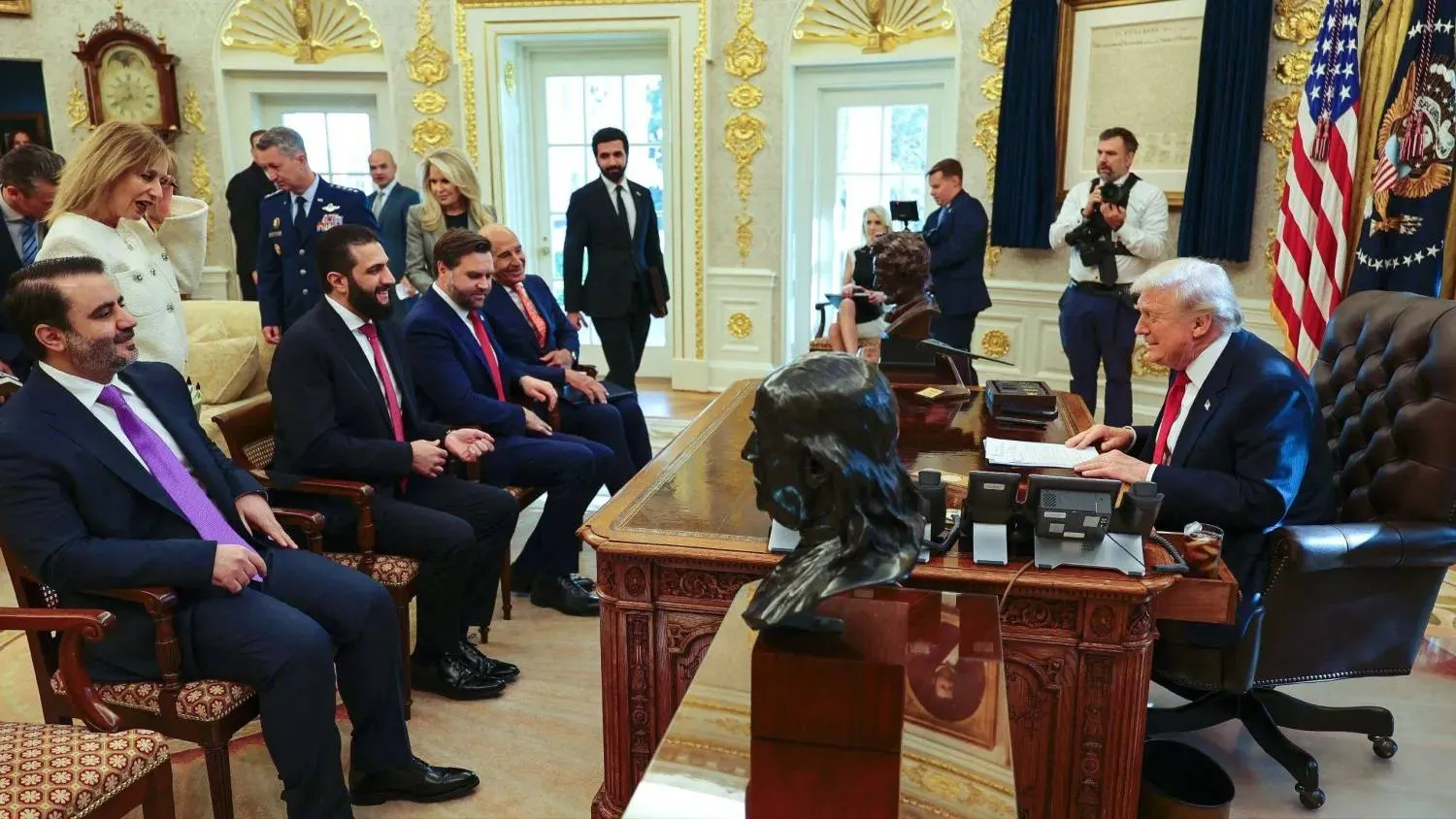If Turkey were given the choice between normalizing relations with the Syrian regime or accepting the establishment of Kurdish state in northern Syrian and on its southern border, then it will opt for the first option as "the lesser of two evils."
This was the gist of Turkish Foreign Minister Mevlut Cavusoglu's remarks last week, when he said that similar to what happened in Afghanistan, Turkey would be willing to work with the regime, without recognizing its legitimacy.
The "lesser of two evils" scenario has been witnessed before in Syria.
When ISIS swept through large swathes of the country and Iraq, western countries eased their push for the overthrow of the Syrian regime, because they believed that it would be replaced by the terrorist organization. This led some countries to stop supporting opposition factions, especially Islamic ones, and to express "concern over the resounding victory of the opposition."
Some observers even go so far as to say that then US President Barack Obama held back from striking Syria in late 2013 because he "feared for the regime, rather than fear the regime.".
Moreover, Russia intervened militarily in Syria in 2015 because it wanted to "preserve the Syrian state" and prevent its fall in the hands of ISIS, which was practically on Damascus' doorstep. Countries reportedly supported, or did not oppose, Russia's intervention at the time because they feared the "substitute" or the "lesser of two evils".
Israel was also confronted with the lesser of two evils: Iran and Hezbollah's strategic entrenchment on its northern border and the "fall of the regime" or coordinating with Russia to "revive the regime". It opted for the second choice and receiving Russian cover to cracking down on Iran and imposing its "red lines" on the Tehran-Baghdad-Damascus-Beirut route. The United States supported Israel through the ongoing deployment of its forces in northeastern Syria. It too does not want Syria to fall in the hands of Iran - "the greatest evil".
As for Arab countries, some opted from the very beginning of the crisis to stand with Damascus. Others were encouraged by Tehran's expanded role and Ankara's incursions in Syria to "normalize" relations with Damascus. We are now speaking of an "Arab role" that favors the survival of the Syrian government and legitimizes it in the confrontation against the "new Persians and Ottomans" - again here opting for the lesser of two evils.
A new Turkish approach in Syria is significant due to its timing. Ankara has made numerous concessions in Syria over the past decade. It started off by demanding the ouster of the regime, before now agreeing to it playing a role at the beginning or end of the transition. It then signed de-escalation agreements and carried out exchanges sponsored by Russia and Iran.
Ankara then abandoned eastern Aleppo in exchange for breaking up the prospects of the emergence of a Kurdish state between the eastern and western Euphrates in late 2016. In early 2018, it made concessions to Moscow while it carried out its incursion in Afrin in northern Aleppo, and preventing the spread of the Kurdish "entity" to the Mediterranean. It later agreed to Moscow and Tehran arranging security meetings between head of Syria's National Security Bureau Ali Mamlouk and chief of Turkish intelligence Hakan Fidan.
Fidan and Mamlouk met in early 2020. Their meeting was preceded by security meetings in Syria's Latakia and in the Iranian capital. The meetings revealed a lot of points of agreement and disagreement. Ankara was forced to readjust its position in wake of its growing concern over Washington's support to the Kurdish Syrian Democratic Forces (SDF) and separatist leanings. This pushed Turkey to coordinate with Damascus despite its belief that the latter had in 2011 paved the way for the Kurds to expand their influence to spite Turkey and pressure it.
At the time, Moscow proposed a return to the 1998 Adana agreement that allowed Turkey to infiltrate five kilometers into northern Syria to crack down on the Kurdistan Workers' Party (PKK). Damascus, in return, wanted concessions from the "Turkish occupation" forces in Idlib, Aleppo and northern Syria.
The circumstances were not "ripe" at the time: Moscow and Ankara were coordinating in northwestern Syria, Washington and Moscow were coordinating in northeastern Syria and Arab countries wanted to compete with Turkey in Syria.
Cavusoglu's recent remarks were also made during now different circumstances:
First, Russian-American coordination collapsed due to the war in Ukraine. US National Security Council Coordinator for the Middle East and North Africa Brett McGurk's plan to pressure the Kurds in return for Russia persuading Damascus to negotiate with the "separatists" and agree to a negotiated settlement also collapsed.
Second, the American deployment will persist in Syria during Joe Biden's term, especially in wake of the chaotic US troop withdrawal from Afghanistan. The American deployment is seen as a victory against ISIS. The deployment is not open-ended, but it is still there.
Third, Arab countries that were seeking normalization with Damascus to compete with Ankara, are now looking for points of interest with Turkey. Syria may be one arena of interest and reports have spoken of possible Turkish-Arab construction projects in Syria.
Is Ankara ready to "cooperate" with Damascus to prevent the rise of Kurdish state that will pose a threat to Syrian, Iranian and Turkish national security?
Cavusoglu's statements and the prospects of a Syrian-Turkish security meeting are significant, especially if they are viewed in wake of the Turkey's drone strikes against leading Kurdish figures in northeastern Syria and its new operation in northwestern Iraq.









